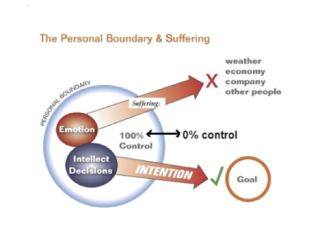Media
How to Find Kind, High-Character People on Social Media
Boundary "holes" and "doors" show the way.
Posted March 29, 2023 Reviewed by Davia Sills
Key points
- "Boundary holes" make for poor interactions on social media that waste energy and time.
- "Boundary doors" make for collaborative interactions that yield useful new ideas without wasting resources.
- Mature, kind people have "boundary doors" and they can be learned and grown.
You may have noticed that we aren't very nice to each other on social media these days.
In over 25 years of practice, I've become convinced that boundary dysfunction is behind most controversies and conflicts—whether among public figures, our families, or electronic spats with anonymous strangers.
Underneath layers of social discord, personal trauma, and collective grievances, great and small misunderstandings happen between people because of impaired personal boundaries. The impersonal nature of electronic discourse amplifies the negative effects of boundaries while diminishing the positive.
Boundaries are an agent of harmony when they're healthy, but like all psychology, they're invisible.
If only we could literally see them.
Since psychology is taught and practiced through the spoken word—the "talking cure"—it isn't in our repertoire to envision boundaries as having the structure and invisible anatomy that can nevertheless be drawn as diagrams to show their function.
I want you to see that people you meet online who have "boundary doors" will tend to be mature and a source of enriching discourse even when you disagree, while people you meet with "boundary holes" are not going to be valuable sources of intellectual or personal growth.
The origin of boundaries
In 1970, Betty Neuman designed a nursing conceptual model that expanded students' understanding of boundaries in nursing models—the only one I've seen that tries to visualize personal boundaries graphically—but I've not seen it spread into general psychology research. The popular Cloud and Townsend book Boundaries doesn't resonate with some readers or use extensive diagrams. Some articles offer general techniques for learning and applying boundaries. Examples are a 2019 Psychology Today feature by Sara Eckel ("The Power of Boundaries"); academic research such as that by Chad Buck ("Establishing Effective Personal Boundaries"), and educational theory such as that by S.A. Akkerman ("Learning at Boundaries").
In decades past, the term "boundaries" was often referred to in "self-help" literature. Meanwhile, Heinz Kohut's principles of self-psychology vastly expanded the understanding of narcissism back then. The "boundary problems" of self-help are inherent in the more formal principles of narcissism.
Maybe we shouldn't forget Kohut so easily, and some of us aren't. Author Hanna Rosin cites him this week in an article that revivifies the important distinction between modest, healthy pride in those with well-developed "boundary doors" as opposed to unhealthy degrees of narcissism inherent in those with a preponderance of "boundary holes."
Boundaries appear to be central to codifying the character virtues of today's "emotional intelligence," as well as the vices of today's hot topic of narcissism. Still, no definitive theory or universal model exists to explain how personal boundaries are responsible for both virtue and vice.
Perhaps the narcissism that Kohut posited to be inherent in all of us has grown and spread with the instant, illusory "fame" made possible through the worldwide reach of social media and the ease of dehumanizing each other through the lack of live, in-person discourse.
The word narcissism has been turned into a euphemism for "immaturity" or low-character vices rife in today's social media. At the same time, "emotional intelligence" is today's euphemism for "maturity," mature ego defenses, or high character virtues that are desperately needed for social media to offer us generative discourse or anything of value for our psychological enrichment.

A visual way of working with boundaries
You can almost see the personal boundary in your mind's eye. Nearly 30 years ago, I started "drawing" them for patients.
If we borrowed from Neuman, Kohut, and others, the result might grant us more practical detail about how they work.
The boundary is a "shield "against the stress around you—except when you have gaps or "holes" in it, places where we have "issues" or "thin skin" or "buttons" people push.
The boundary also works as a "tank" to contain your energy, emotions, ideas, beliefs, preferences, and choices—not to mention material property, money, and your body. Yet that "tank" leaks or drains these core aspects of you when there are "holes" in it.
Suppose we draw some "boundary holes." Notice where those holes allow us to be triggered, easily manipulated, or worse—through them, much of our time, energy, and even money are "drained" by negative interactions with others.
Such distractions don't benefit either of you. They are what we could call "win-lose interactions."
Furthermore, these "boundary holes" can make you unwittingly manipulative of others or prone to invade their space or offend their beliefs.
Boundary holes—to whatever extent we have them—are what to repair to improve our participation in social media. The way to do so is to practice saying "no" to others more when we have a preference while learning to "hear the word no" with grace—accepting limits to our control and authority—while still being willing to continue engaging in the conversation.
They are also what to avoid when obviously present in other people on the internet.
Because they are the cause of "control issues" in people, they set us up to get embroiled in oneupmanship with people who would rather be "right" than happy, thoughtlessly contrary rather than curious and collaborative.
Notice stress to be a source of general negative emotion. When we let it get to us, it negates our self-esteem—our general positive emotion. You can see in the video how holes in the boundary allow stress to come in anytime it wants, draining our self-esteem without our even noticing. Sometimes we "stress ourselves" out through a process that Buddhists call "suffering," which amounts to a struggle to control what we don't control. This also drains our energy of self-esteem.

The truth is that we control zero percent of the stresses and the people outside our boundaries. That causes the bitter arguments caused by the reality that we don't control other people, their feelings, or their beliefs.
Finding kind, high-character people on social media and in person
A kind, high-character person will spot their own suffering and that of others—the "boundary holes"— and instead of struggling to control things, they'll try to focus on collaborative intentions for the future.
They have "boundary doors," and we can build them in ourselves, too.
They set and strive for goals but don't demand the total control that causes them to suffer. They simply aim with conscious intention at future goals instead of getting drawn into the goalless emotional drama.
This is how an emotionally intelligent person uses a "boundary door"—neither a hole nor a wall.
It opens to teamwork with others when their goals and beliefs align, and it closes when there are control issues, emotional drama, or a vast difference in opinions or goals.
The video below shows how an "emotionally intelligent" person closes their boundary door to "win-lose" deals that don't benefit both parties. They close the door by saying "no" to what's unproductive. Yet the door opens—saying "yes" to friendly interactions that are courteous and "win-win"—where both parties have something to gain by sharing their beliefs and ideas.
With "boundary door" people, disagreement is fine. It sees us curious to mine our differences for potential new ideas rather than sameness in which no new ideas exist. For example, we may disagree on politics but fully align on what we all want for our children's futures. From there, we may realize a new idea for children's welfare is impossible in separate echo chambers but emerges after we disagree, stop to think, then propose some synthesis of our differing ideas.
The edges between boundaries that encounter these disagreements of perspective are the only place intellectual exchange can occur. Also, people with "doors" don't entirely eject others from their lives. Nor do they play mental games or "gaslighting."
The best clue, then, to somebody full of "doors" is that they are able to consistently "agree to disagree" and still genuinely like you.
If you were to look for only one trait in a person with whom you can have a valuable, generative discourse online, it would be this.
You can find kind, mature people on social media best by recognizing "boundary doors." When you do, you can count on courteous, generative public discourse in the town hall we all share.
References
Betty Neuman (1970), Gonzalo, A. (2023). Nurseslabs.
Cloud and Townsend (2017). Boundaries. Zondervan; Enlarged edition.
Sara Eckel (2019). The Power of Boundaries. Psychology Today.
Buck, Chad (2019). Establishing Effective Personal Boundaries
Kohut, H. (1971). Analysis of the Self. University of Chicago Press.




